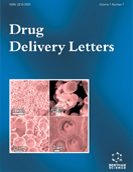Abstract
For many years, improvements have been made in certain attempts for liposomal stability, by several methods, including preparing more stable bi-layers, coating their surface with protecting polymers, and modifying charge. These methods on subjecting to certain changes have led to a novel type of liposomes called proliposomes. Dry, free-flowing particles with a dispersed system that can form a liposomal suspension immediately when in contact with water called Proliposomes. These Proliposomes are as good as or even better than conventional liposomes. Because of their solid properties, the physical stability of liposomes can also be improved upon without influencing their intrinsic characteristics and show more advantages in promoting drug absorption. Therefore, proliposomes would be a potential vehicle to help improve the oral absorption of hydrophobic drugs. The focus of this review is to bring out different aspects related to liposomes, Proliposomes preparation, characterization, entrapment efficiency, in vitro drug release, applications and merits.
Keywords: Cholesterol, liposome, phospholipid, proliposome, reticulo endothelial system (RES).
Drug Delivery Letters
Title:Review on Novel Carrier System: Liposomes and Proliposomes
Volume: 4 Issue: 2
Author(s): Gangadhar Veerapu, H.V. Gangadharappa, B. Nagashubha and V. Balamuralidhara
Affiliation:
Keywords: Cholesterol, liposome, phospholipid, proliposome, reticulo endothelial system (RES).
Abstract: For many years, improvements have been made in certain attempts for liposomal stability, by several methods, including preparing more stable bi-layers, coating their surface with protecting polymers, and modifying charge. These methods on subjecting to certain changes have led to a novel type of liposomes called proliposomes. Dry, free-flowing particles with a dispersed system that can form a liposomal suspension immediately when in contact with water called Proliposomes. These Proliposomes are as good as or even better than conventional liposomes. Because of their solid properties, the physical stability of liposomes can also be improved upon without influencing their intrinsic characteristics and show more advantages in promoting drug absorption. Therefore, proliposomes would be a potential vehicle to help improve the oral absorption of hydrophobic drugs. The focus of this review is to bring out different aspects related to liposomes, Proliposomes preparation, characterization, entrapment efficiency, in vitro drug release, applications and merits.
Export Options
About this article
Cite this article as:
Veerapu Gangadhar, Gangadharappa H.V., Nagashubha B. and Balamuralidhara V., Review on Novel Carrier System: Liposomes and Proliposomes, Drug Delivery Letters 2014; 4 (2) . https://dx.doi.org/10.2174/22103031113036660019
| DOI https://dx.doi.org/10.2174/22103031113036660019 |
Print ISSN 2210-3031 |
| Publisher Name Bentham Science Publisher |
Online ISSN 2210-304X |
 39
39
- Author Guidelines
- Bentham Author Support Services (BASS)
- Graphical Abstracts
- Fabricating and Stating False Information
- Research Misconduct
- Post Publication Discussions and Corrections
- Publishing Ethics and Rectitude
- Increase Visibility of Your Article
- Archiving Policies
- Peer Review Workflow
- Order Your Article Before Print
- Promote Your Article
- Manuscript Transfer Facility
- Editorial Policies
- Allegations from Whistleblowers
Related Articles
-
Histotype in Non-Small Cell Lung Cancer Therapy and Staging: The Emerging Role of an Old and Underrated Factor
Current Respiratory Medicine Reviews Role of Nitrosative Stress and Activation of Poly(ADP-ribose) Polymerase-1 in Cardiovascular Failure Associated with Septic and Hemorrhagic Shock
Current Vascular Pharmacology Anthocyanins as a Potential Therapy for Diabetic Retinopathy
Current Medicinal Chemistry Recent Developments in Tumor Angiogenesis
Current Pharmaceutical Biotechnology Gastrointestinal Hemorrhage is Associated with Mortality after Acute Ischemic Stroke
Current Neurovascular Research SAR, QSAR and Docking of Anticancer Flavonoids and Variants: A Review
Current Topics in Medicinal Chemistry Novel Microwave Assisted Synthesis and Antimicrobial Activity of New Quinolone-Hybrids
Letters in Organic Chemistry The Use of Ghrelin and Ghrelin Receptor Agonists as a Treatment for Animal Models of Disease: Efficacy and Mechanism
Current Pharmaceutical Design Reviewing the Role of Resveratrol as a Natural Modulator of Microglial Activities
Current Pharmaceutical Design Structural, Functional and Therapeutic Aspects of Snake Venom Metalloproteinases
Mini-Reviews in Organic Chemistry The CXCL12/CXCR4 Axis as a Therapeutic Target in Cancer and HIV-1 Infection
Current Medicinal Chemistry Capsaicin and Its Analogues: Structure-Activity Relationship Study
Current Medicinal Chemistry Identification of Drug Candidates for Breast Cancer Therapy Through Scaffold Repurposing: A Brief Review
Current Drug Research Reviews A Rationale for the Use of Proton Pump Inhibitors as Antineoplastic Agents
Current Pharmaceutical Design Matrix Metalloproteinases as Potential Targets in the Venous Dilation Associated with Varicose Veins
Current Drug Targets The Role of Endogenous H2S in Cardiovascular Physiology
Current Pharmaceutical Biotechnology Design, Synthesis, and Structure-Activity Relationship Study of Peroxisome Proliferator-Activated Receptor (PPAR) δ-Selective Ligands
Current Medicinal Chemistry Biological Abilities of Rice Bran-Derived Antioxidant Phytochemicals for Medical Therapy
Current Topics in Medicinal Chemistry Effect of Long Chain n-3 PUFA on Endothelial Activation, Endothelial Function and Atheromatous Plaque Stability
Current Nutrition & Food Science Cutting the Limits of Aminobisphosphonates: New Strategies for the Potentiation of their Anti-Tumour Effects
Current Cancer Drug Targets


























